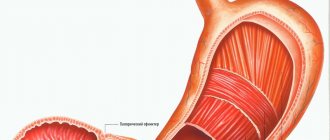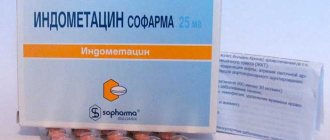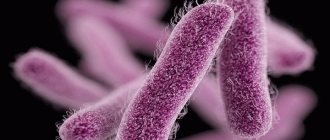Focal atrophic gastritis is a chronic pathological process that affects the gastric mucosa. Inflammation disrupts the normal functioning of organ cells and causes the gradual death of glands that produce necessary enzymes.
This form of gastropathology can develop in a certain part of the stomach or spread over the entire inner surface of the gastric walls and is considered one of the most dangerous types of chronic gastritis, as it has a high probability of malignancy.
Causes
There is no consensus among experts about the reasons that provoke the development of this disease. Among the factors contributing to the occurrence of atrophy of the gastric mucosa are the following:
- consumption of rough foods and insufficient chewing of food;
- carbonated drinks, coffee, alcohol;
- smoking;
- constant overeating;
- eating a large amount of hot, spicy and other foods with an aggressive taste;
- excessively hot or cold food;
- long-term use of medications;
- reflux (reflux of intestinal contents into the stomach).
All of these factors have an irritating effect on the mucous membrane, which over time leads to the occurrence of atrophic processes in it.
Causes
All causes of atrophic gastritis are divided into exogenous (external) and endogenous (internal). Exogenous include malnutrition and the entry of toxic products into the stomach. Food can cause illness if:
- irregular meals, long periods of fasting, subsequent overeating;
- incomplete chewing in case of problems with teeth, diseases of the oral cavity,
- lack of timely prosthetics if an elderly person has nothing to eat;
- dry snacking habits;
- passion for fast food, smoked meats, fatty meat dishes, foods with contrasting temperatures.
Of the toxic substances entering the body, the gastric mucosa is most sensitive to:
- nicotine;
- coal, cotton and metal dust;
- salts of lead, arsenic;
- alcohols;
- medications containing salicylates, Prednisolone, sulfonamide compounds.
Substances from the Aspirin group are included in headache tablets
Endogenous causes of gastric damage in atrophic gastritis can be processes of disruption of the physiological restoration of the gastric mucosa (regeneration of epithelial tissue), Helicobacter, disorders of the nervous and endocrine regulation of the activity of secreting cells of the stomach during stress, diseases of the nervous system, myxedema, dysfunction of the pituitary gland and adrenal glands.
The list continues with impaired blood circulation in the stomach wall, insufficient blood flow in regional vessels (atherosclerosis, thrombosis), venous stagnation (with high pressure in the portal system) and complicated heredity.
Symptoms of atrophic gastritis
The main manifestations of atrophic gastritis are caused by functional insufficiency of the stomach, which develops against the background of changes in the mucous membrane. Among these symptoms are:
- pain syndrome - dull aching pain, intensifying after eating, due to overstretching of the stomach walls;
- dyspeptic syndrome (digestive disorder syndrome) - decreased or complete lack of appetite, belching of air or rotten food, nausea, a feeling of heaviness and fullness in the epigastric region, putrid breath, unpleasant taste in the mouth;
- anemic syndrome - characteristic changes in the general blood test in combination with rapid fatigue, deterioration of tolerance to usual physical activity, drowsiness, apathy;
- bacterial overgrowth syndrome - rumbling in the stomach, increased gas formation, unstable stool;
- dystrophic syndrome is the result of impaired absorption of vitamins and digestion of nutrients.
At first, all these signs are barely noticeable, but as the pathological process progresses, complete exhaustion of the body develops quite quickly.
Symptoms
There are no symptoms unique to atrophic gastritis in women. They can be of low intensity, making it very difficult to recognize the disease in the early stages of pathogenesis. Very often there is even no pain syndrome, which is characteristic of hyperacid gastritis. Pain may not appear even at later stages of pathology development.
Among the most common symptoms of a violation of compensatory mechanisms, there are symptoms that are inherent in all forms of gastritis pathology:
- A feeling of heaviness in the solar plexus area after eating (it always appears and does not depend on how much food you have eaten);
- Unpleasant odor from the mouth;
- Increased gas formation;
- Frequent attacks of vomiting and nausea;
- Rumbling and other sounds from the stomach;
- constipation or diarrhea;
- Lack of vitamins (a person is severely lacking cyanocobalamin (vitamin B12), which can cause anemia, ulcerations on the oral mucosa, tingling in the tongue, headaches, yellowing of the skin);
- Severe weight loss;
- Hormonal imbalances (hypocortisolism, problems with sexual desire).
Of particular clinical value are those signs of atrophic processes in the stomach that can be identified through laboratory, functional and instrumental studies.
Acute atrophic gastritis
In this case, we should talk about the stage of exacerbation of chronic atrophic inflammation of the walls of the stomach. In some sources, this condition is called active gastritis. The symptoms resemble those of acute superficial inflammation of the stomach.
Laboratory and instrumental methods establish the following characteristic signs of acute atrophic gastritis:
- swelling of the organ walls;
- plethora of blood vessels in the walls;
- infiltration of leukocytes outside the blood vessels;
- destruction of the integumentary epithelium, rarely - erosion on the mucous membrane.
In some cases, atrophy of glandular tissue cells occurs under the influence of external emergency factors - strong acids, alkalis, chemical poisons, and so on. Diagnosis and treatment of acute toxic atrophy of the glandular tissue of the stomach is carried out not by gastroenterologists, but by doctors specializing in toxicology, narcology and surgery.
Symptoms of acute atrophic gastritis are varied: severe pain, vomiting, diarrhea, increased body temperature, disturbances of consciousness - fainting, coma. Other specific symptoms are characteristic of each specific pathological process. Exposure to mucous membranes of strong pathogens often ends in the death of the patient due to general intoxication of the body, cardiac or respiratory arrest.
Chronic atrophic gastritis
It is an independent disease, and not a transformation of acute gastritis. This condition is sometimes called inactive gastritis or gastritis in remission. It is characterized by long-term, progressive atrophy of glandular tissue cells, the predominance of dystrophic processes over inflammatory ones. Pathogenesis leads to changes in secretory, motor and absorption functions. In the chronic form of atrophic gastritis, the pathogenesis involves organs anatomically associated with the stomach: duodenum, esophagus, as well as organs functionally associated with the stomach: liver, pancreas, endocrine glands. Due to general intoxication of the body, the process of hematopoiesis and the nervous system are involved in pathogenesis.
Pathogenesis, as a rule, develops against the background of low acidity of gastric juice. Clinical symptoms correspond to gastritis with low acidity.
The diagnosis of acute and chronic gastritis is made on the basis of differential diagnostic data. The examination is carried out using instrumental, functional and laboratory methods. Of particular value are endoscopy and its varieties, pH-metry, histological methods for examining biopsy specimens, and laboratory blood testing - gastropanel.
During diagnostic studies, chronic atrophic gastritis is manifested by the following symptoms:
- normal or thinned organ wall;
- smoothed mucous membrane;
- wide gastric dimples;
- flattening of the epithelium;
- low secretory activity of the glands;
- moderate infiltration of leukocytes outside the vessels;
- degeneration (vacuolization) of gland cells.
Focal atrophic gastritis
Foci of pathological transformations of cell accumulations appear. Typically, this form appears against the background of an increase in the level of acidity in the stomach cavity. Those parts of the organ that have not been negatively affected work in an enhanced mode and compensate for the lack of substances necessary for digesting food.
The symptomatic picture is the same as with ordinary gastritis. Focal gastritis can cause intolerance to dairy, meat products and eggs. After eating them, the patient may experience vomiting and heartburn.
Moderate atrophic gastritis
Based on the degree of involvement of glandular tissue in degenerative-atrophic processes, sometimes in clinical practice a moderate form of inflammation is distinguished. The designation is conditional and implies a mild, partial form of pathological transformation of the cells of the gastric walls.
Moderate atrophic gastritis is detected only by histological examination of glandular cells. At the same time, the number of undamaged cells per unit area of the gastric mucosa is determined, and the depth of microstructural changes in glandular and degenerated tissue is analyzed, which serves as a criterion for determining this type of disease.
Clinical symptoms correspond to common dyspeptic disorders. The pain characteristic of acute forms of gastritis is not always fully manifested in this disease. More often, patients complain of a feeling of discomfort in the epigastrium that occurs after eating. Pain is only possible when eating heavy (spicy, salty, smoked, pickled or fatty) foods.
Surface
It is a harbinger of atrophic gastritis, as this is one of the earliest stages of chronic gastric disease. Symptoms and dystrophic changes are very minor; pathology is detected through differential diagnosis.
A detailed analysis of the gastrointestinal tract usually shows:
- Not strong secretory activity of cells;
- Moderate degeneration processes in the integumentary epithelium;
- Standard thickness of the gastric wall.
Diffuse
Characterized by the absence of a pronounced decrease in the thickness of the walls of the stomach, it is a transitional stage from the superficial to the dystrophic form. It manifests itself in disturbances in the histological structure of the glandular bodies, with their further pathologies of functioning.
Also, ridges and pits appear on the inner walls of the organ.
Antral
The antrum is located at the bottom of the gastric cavity, it is located almost at the transition of the organ to the duodenum. With this type, the antral component of the organoid is specifically affected and scarred. The diseased part of the stomach looks like a tube with thickened walls; this phenomenon is called “rigidity”. A
Antral atrophic gastritis is characterized by a moderate clinical picture and is accompanied by the following symptoms:
- Dull pain in the solar plexus area;
- Nausea in the morning;
- Presence of belching;
- General malaise and weakness;
- Appetite disorders;
- Loss of body weight for no apparent reason.
With this type of pathology, low acidity, deformation of the mucous membranes, macroscopic changes on the internal walls of the stomach, and deterioration of peristaltic function are often recorded. The pathological process may be accompanied by the appearance of ulcers and tumors.
Chronic atrophic gastritis
This is a sluggish illness, during which thinning of the gastric mucosa occurs, a decrease in the amount of gastric juice production due to a decrease in the number of glands.
In approximately half of the cases, such a disease is necessarily accompanied by a change in the structure of the membrane, i.e., its metaplasia. This is caused by a decrease in the number of normal cells and glands and the formation of hybrids that have a combination of characteristics that should not normally exist.
Gastric cells are often replaced by intestinal cells. In addition, the disease is distinguished by the fact that as it progresses, it involves the anatomically located nearby internal organs of the gastrointestinal tract into the inflammatory process, and the functioning of the circulatory and nervous systems is also disrupted.
Often the chronic form is manifested by such symptoms as:
- pain in the stomach - usually dull in nature and occurs on an empty stomach or some time after eating food;
- discomfort – determined by pressure, bloating, a feeling of heaviness and rapid saturation;
- severe heartburn;
- belching with a sour, unpleasant odor;
- flatulence;
- increased sweating;
- unpleasant sensations in the oral cavity associated with the appearance of a whitish coating on the tongue and a metallic taste;
- significant reduction in body weight, which is caused by aversion to food;
- pale skin;
- increased fragility of nail plates and hair loss;
- the occurrence of an inflammatory process in the gums;
- weakness and lethargy of the body.
In addition, there are specific signs for some types of atrophic gastritis.
Pathogenesis
H. pylori causes chronic cellular damage by weakening the local protective properties of the gastric mucosa, which ultimately allows toxins and free radicals to freely penetrate the tissue and damage the cell nuclei. At the end of this process, the cells acquire the properties of several types of tissues - the so-called hybrid cells, which have the properties of precancerous ones.
This process is called intestinal metaplasia. Initially, these areas of the mucosa take on the appearance of small intestinal epithelium, then colonic epithelium. The further the metaplasia process has progressed, the greater the likelihood of developing gastric adenocarcinoma. Today, Helicobacter pylori infection is included in the list of biological carcinogens, because without proper treatment it sooner or later leads to stomach cancer.
The mechanism of development of the autoimmune process is somewhat different. At the same time, due to impaired immunity, antibodies begin to form in the body, which recognize the stomach’s own tissues as foreign. Most often, antibodies are produced to G-cells and Castle factor, which is responsible for the absorption of vitamin B12. Because of this, the acidity of the stomach gradually decreases, the cells are rebuilt and begin to produce mucus instead of hydrochloric acid. The stomach stops absorbing iron and vitamins, and severe pernicious anemia develops. If autoimmune gastritis is accompanied by Helicobacter pylori infection, a precancerous condition will develop much faster.
Diagnostics
Correct diagnosis of atrophic gastritis consists of methods such as X-ray, FEGDS (fibrogastroduodenoscopy), histological examination, general blood test, ultrasound, assessment of the functionality of the stomach.
- Ultrasound can detect smoothing of folds along with a decrease in the size of the organ.
- FEGDS shows thinning of the mucosa, a change in its color to gray or pale pink, smoothness of folds, and an increase in the vascular pattern. It is possible to identify areas of metaplasia into the intestinal epithelium.
- Assessing the functional activity of the stomach involves measuring the pH of gastric juice in order to assess the acidity of atrophic gastritis in this patient and determine the activity of pepsin.
Interesting: initial information about this disease appeared in 1728, but the real beginning in the study of atrophic gastritis is the activity of a doctor from France named Brousse. During autopsies, he found in almost every case changes in the gastric mucosa and identified them as inflammation. At that time, his thoughts were incorrect, since they represented only changes on the part of a non-viable organ.
Subsequently, Kussmaul's version arose, explaining atrophic gastritis of the stomach from the point of view of a violation of the nervous regulation of the organ, but it turned out to be erroneous. In the period from 1900 to 1908, Faber proposed a method of fixing a stomach preparation with formalin, which saved scientists from the problem of post-mortem defects and clearly showed the presence of changes in the type of gastritis.
Why is eradication necessary?
Eliminating Helicobacter helps:
- suppress further development, the addition of other bacteria, and the growth of antibiotic-resistant strains;
- reduce the duration of treatment for gastritis;
- reduce the negative effects of medications;
- bring the acidity of gastric juice closer to normal.
The most effective treatment regimens are those that combine tetracycline and penicillin antibiotics and Metronidazole (Trichopol). The modern product De-Nol, a drug based on bismuth citrate, is actively used. Doses are selected individually.
How to treat atrophic gastritis
The traditional treatment regimen for atrophic gastritis in adults includes the eradication of Helicobacter pylori, if acid-fast bacteria have a significant effect on the pathogenesis. Helicobacter pylori eradication methods are constantly being improved.
Eradication objectives:
- suppressing the development of bacteria and preventing the formation of their resistance to antibiotics;
- reduction of treatment duration;
- the use of proton pump inhibitors to improve well-being;
- reducing the number of medications, which significantly reduces the number of side effects from treatment;
Three- and four-component eradication schemes are usually used:
- The drugs Omeprazole, Lansoprazole, Esomeprazole, Rabeprazole, Pantoprazole, Ranitidine, bismuth citrate and others are used as proton pump inhibitors.
- Antibiotics (tetracycline, penicillin), as well as the antibacterial drug metronidazole (Trichopol), are used as means of suppressing the activity of bacteria. The dosage and frequency are indicated by the doctor.
We have not yet fully learned how to influence the development of autoimmune processes in atrophic gastritis. The use of hormonal drugs and other immunocorrectors is not justified in most cases.
Pathogenetic therapy of atrophic gastritis involves the complex use of drugs from various groups, including:
- in cases of vitamin B12 deficiency, appropriate vitamin preparations are used in the form of parenteral injections.
- means that facilitate gastric digestion - preparations of hydrochloric acid and gastric juice enzymes.
- agents that reduce inflammation - plantain juice or a granulated pharmacological preparation from plantain (Plantaglucid).
- agents that influence the production of hydrochloric acid in the form of mineral waters (Essentuki 4.17 and others). Although they are not drugs, in some cases they show high therapeutic activity.
- To protect the mucous membrane, bismuth or aluminum preparations are used (Bismuth nitrate basic, Vikalin, Vikair or Rother, Kaolin).
- means regulating the motor function of the stomach. Among the drugs of this pharmacological group, Domperidone and Cisapride are most often used.
- In recent years, Riboxin has become more often used in the treatment of gastrointestinal inflammation. This drug has properties useful in the treatment of atrophic gastritis.
In addition to etiotropic treatment, treatment is carried out in several other areas:
- diet therapy in compliance with the principles of mechanical, thermal and chemical sparing;
- replacement therapy with hydrochloric acid preparations, enzyme preparations;
- stimulation of the secretion of hydrochloric acid (mineral waters, medicinal preparations, citric and succinic acids, etc.);
- protection of the gastric mucosa with gastroprotectors;
- the use of regenerants and reparants to restore the mucous membrane;
- the use of enveloping and astringent drugs;
- increased gastric motility (prokinetics);
- physiotherapeutic treatment.
All of the above drugs are prescribed during the active phase of gastric inflammation with symptoms of atrophy. During the period of remission, the main principle of treatment is to replenish the substances missing for proper digestion.
Development mechanism
The essence of the processes occurring during atrophic gastritis comes down to the cessation of the activity of some of the cells of the mucous membrane to produce the constituent elements of gastric juice, including hydrochloric acid. Changes begin with replacing production with slime. Typically, at the beginning there is an activation of acid formation, then a transition to significantly reduced acidity.
Most researchers are of the opinion that Helicobacter plays a role only in the first stage of the disease. It contributes to an increased consumption of acidity, spending some of it on the operation of its own enzyme systems. By this, Helicobacter completely disrupts the ability of the gastric mucosa to protect itself from external influences and destroy other incoming pathogens and toxic substances from food.
In the future, the main pathological direction is considered to be autoimmune. The body perceives its own cells as foreign and reacts by producing antibodies to them. Since such agents (antigens) are epithelial cells, they are destroyed during the reaction, thus blocking the recovery (regeneration) process.
In a healthy person, the epithelium is completely renewed every 6 days. Mucus production does not replace gastric juice. Complete cells are replaced with connective tissue. The stomach wall gradually becomes thinner and stops participating in digestion. Undigested food accumulates in the stomach cavity, which stimulates increased gastrin synthesis.
Instead of replacement, the epithelium can produce similar cells that have lost the ability to secrete gastric juice
Most often, transformation occurs in areas of the intestinal epithelium (metaplasia, dysplasia). This condition is called precancerous. It is impossible to say exactly how long it will take for the transition to cancer to occur. The problem of whether atrophic gastritis can be cured at this stage rests on preventing further degeneration of the epithelium with the help of diet, diet, and medications.
Atrophied areas of the mucosa permanently lose their properties. The result of therapy depends on how much it is possible to support the remaining cells and compensate for the reduction of working epithelium.
Alternative treatment of atrophic gastritis
You can increase the secretion of gastric juice in atrophic gastritis with low acidity using traditional methods of treatment:
- Drink half a glass of beet juice before meals.
- Potato juice – grate the potatoes on a fine grater, strain through cheesecloth. Drink the resulting juice 1/3 glass 3 times a day. The duration of the course of treatment is 10 days, after which you need to take a break for 10 days.
- St. John's wort will help increase the acidity level - pour 2 tablespoons of crushed flowers into a glass of boiling water and leave for 2 hours. Drink the resulting infusion three times a day, 20 minutes before meals.
- Sauerkraut brine – enhances the production of gastric juice. Strain the cabbage infusion and drink 1/3 cup 3 times a day before meals.
- Rose hip decoction without sugar - drink freshly brewed tea before meals.
- White cabbage juice - the cabbage is grated or chopped using a meat grinder, the juice is filtered through cheesecloth. The resulting juice should be stored in the refrigerator and drunk 30 minutes before meals, 1/3 cup. It must first be warmed to body temperature.
Following a diet during the treatment of gastritis is very important! During the period of subsidence of the acute form of the inflammatory process, the patient must also adhere to dietary restrictions.
What facts have to be taken into account?
The true prevalence of gastric atrophy is unknown, because not the entire population is examined gastroscopically. If we assume that atrophic gastritis follows gastric autoimmune processes and represents the outcome of Helicobacter pylori infection, then researchers consider it a possible culprit of the pathology in 60% of the adult population. The facts indicate the following.
The insidiousness of the disease lies in its mild symptoms even over a long period of time, which is why 10–15% of sick people turn to doctors. This leads to low detection and delayed anti-cancer measures.
It has been proven that it is with atrophic gastritis that impaired epithelial growth most often appears, turning into a precancerous state. The chronic atrophic process in the stomach is the initial stage of many disorders in the etiology of diseases of the liver, intestines, and pancreas.
Serves as a complication or consequence of a long-term inflammatory process, including non-atrophic antral gastritis. The varieties differ in the depth of damage to the stomach, localization, massiveness of the inflammation area, and the presence of erosions.
The acute form accompanies the toxic effects of a toxic substance, emergency factors (acids, poisons, alkalis), therefore it passes by gastroenterologists, and is treated as one of the manifestations by toxicologists. The patient goes to the therapists in case of chronic symptoms.
In the existing International Classification it is presented as “chronic atrophic gastritis” with code K29.4.
Diet and proper nutrition
Compliance with a diet for atrophic gastritis is one of the most important points affecting the effectiveness of treatment of this disease. As with other types of gastritis, normalization of nutrition, adherence to a regimen and exclusion of certain foods are required to improve and facilitate the functioning of the stomach.
Prohibited products include:
- smoked, salted and pickled products;
- fatty and fried foods;
- alcohol;
- tea, coffee, carbonated drinks;
- sweets
- spicy seasonings.
In case of exacerbation of the disease, diet No. 1a is prescribed. In this case, food is allowed only in liquid form, as well as in pureed or mashed form. It must be steamed or boiled. The menu consists of nine main dishes, these are mainly puree soups, and the consumption of dairy products is also acceptable.
Such a diet for atrophic gastritis at the acute stage is short-lived until the acute symptoms are eliminated. Then meals follow diet menu No. 1. Limits include hot and very chilled foods, as well as foods rich in fiber.
When stable remission is achieved, the patient is transferred to basic diet No. 2. The diet is becoming more varied, but you should adhere to gentle heat treatment methods and steam, boil, bake, and lightly frying food is allowed. The consumption of vegetables and fruits, meat, fish, and dairy products is allowed. You should not eat chilled food with a rough texture.
Prevention
Preventive measures must be comprehensive:
- timely, complete treatment of chronic gastritis (with mandatory antibiotic therapy);
- systematic clinical observation;
- development of a rational food stereotype - limiting the consumption of canned, pickled and smoked foods, quitting smoking and drinking strong alcoholic drinks (especially in combination with fatty, fried, smoked and salty foods), overeating.
In developed countries of Europe and the USA, active promotion of a healthy lifestyle has led to a decrease in the incidence of stomach cancer several times, to 3% of the total mass of malignant neoplasms. In Russia, stomach cancer is the second most common malignant tumor.
Gastritis Erosive gastritis Atrophic rhinitis Helicobacter pylori - what is it and how to treat? Stomach ulcer Stomach cancer
Forecast
With timely comprehensive treatment, the prognosis is favorable. In 2002, Japanese scientists proved the possibility of reversing the development of precancerous changes in the gastric mucosa after eradication (destruction) of Helicobacter pylori bacteria. Using chromoscopy, it was established that within five years after successful anti-Helicobacter therapy, the size of the foci of intestinal metaplasia decreased by almost 2 times compared to the initial ones.
Complete restoration of the structure of the mucous membrane in severe atrophy requires a long time, and in some cases is most likely impossible. If pre-tumor processes do not undergo reverse development, but, on the contrary, progress, radical treatment methods are used, including resection of the gastric mucosa.
Description of the pathology
Atrophic gastritis is an inflammatory lesion of the mucous membrane and glands of the stomach, which is characterized by a severe reduction in the number of normally functioning cells. Atrophic processes are accompanied by disruption of the structure of stomach cells, which subsequently provokes their death. As a result, the ability to produce mucus and enzymes and absorb nutrients is lost.
With such gastritis, the manifestations of the disease are associated with a significant loss of the gastric mucous layer, a decrease in the synthesis of gastric juice and insufficient absorption of food.
Endoscopy, atrophic borders (yellow line) in patients with gastritis.
Diagnosing is easy...You just have to want to
The diagnosis of gastritis rarely causes confusion, but identifying its cause is more difficult. To identify inflammatory changes and if an infectious disease is suspected, a general and biochemical blood and urine test is performed. Using blood, you can also detect the presence of helminthic infestation and gastrin. Inflammation of the stomach is immediately noticeable during fibrogastroduodenoscopy (FGDS). If an oncological process is suspected, a biopsy of the affected area is performed. Increased or decreased acidity can be assumed from a person’s complaints, in particular, the presence of heartburn indicates increased acidity. To confirm the diagnosis, a specific diagnosis of H. Pylori is carried out, which can be detected using serology or after a urease test. Additionally, Ph-metry is prescribed to measure the acidity of gastric contents. To identify clinically associated diseases, an ultrasound of the abdominal organs is performed, blood is donated for iron and B-12, and hormonal levels are assessed.
Diagnosis and drug treatment
Medicines should be taken only after examination by a medical specialist, a thorough examination and establishment of a final diagnosis.
Important! If the development of atrophic gastritis is suspected, the leading method of examination is endoscopic examination.
During this study, a visual assessment of changes in the surface tissues of the stomach is carried out, and material is taken for histological analysis.
Based on the totality of data, complex therapy is prescribed. Taking certain medications depends on many factors, the form and characteristics of the disease, the patient’s age, and the presence of concomitant diseases.
Important! If you are wondering which doctor treats gastritis, read our article.
Treatment is carried out in several directions and may include:
- antibacterial therapy aimed at destroying the bacterium Helictibakter Pylori. For these purposes, antibiotics of the penicillin and tetracycline series, as well as broad-spectrum antibacterial drugs, are prescribed;
- taking medications aimed at improving digestion processes, for example, activated carbon, other antifoaming agents, pancreatic enzymes, choleretic agents;
- a course of vitamins B12, B1, B6 intramuscularly;
- taking agents that coat the walls of the stomach, for example, Maalox, Almagel;
- taking medications aimed at regulating gastric motility;
- taking H2 receptor blocking drugs that reduce the acidity of gastric contents - omez or its analogue omeprazole.
Important! Self-administration of medications is unacceptable. In this case, there may be a risk of complications and deterioration of the general condition.
If atrophic gastritis is detected, the patient is prescribed a course of treatment, and he is observed on an outpatient basis, registering with a dispensary at the clinic at his place of residence. This also means the need to undergo a medical examination once a year. In case of exacerbation of gastritis, treatment is carried out in a hospital setting.
Classification
There are quite a few types of atrophic gastritis, each of which is characterized by certain features.
Focal gastritis
This form of pathology is characterized by changes in the tissue of the organ wall. In some cases, the disease is accompanied by high acidity of the juice. Most likely, this is due to compensation for the work of impaired foci by increasing acid production. The remaining manifestations of the disease do not differ from the symptoms of ordinary gastritis.
In subclinical cases, focal gastritis is accompanied by poor tolerability of certain categories of products. These include fatty meat, eggs, milk. After eating such dishes, a person suffers from heartburn and nausea, and sometimes vomits.
Superficial gastritis
This term refers to the initial stage of development of chronic inflammation. In this case, the damage is not pronounced, clinical manifestations are practically absent.
To make an accurate diagnosis, endoscopic examination should be performed. Based on the diagnostic results, it is possible to establish a moderate disturbance in the structure of the epithelium, normal thickness of the gastric wall, and a slight increase in cell secretion.
Moderate gastritis
Depending on the level of involvement of the gland tissue in the pathological process, moderate inflammation is sometimes diagnosed. This term is quite conditional and consists of a slight change in the cells of an organ.
Only histological examination helps to identify this disease. In this case, the volume of healthy cells is determined, and changes in stomach tissue are also analyzed.
The manifestations of this form of the disease resemble ordinary dyspeptic disorders. The pain that often accompanies exacerbations of gastritis is not always present.
Patients often experience epigastric discomfort - most often it appears after eating. Pain syndrome is observed exclusively after eating heavy foods - smoked meats, marinades, pickles, spicy or fatty foods.
Antral gastritis
The antrum is the lower part of the stomach, which is located near the duodenum. The pathology is characterized by scarring of this area of the organ. With the development of this form of the disease, the following manifestations occur:
- dull pain that is localized in the solar plexus;
- nausea in the morning;
- loss of appetite;
- belching after eating;
- weight loss;
- general weakness.
Based on the results of measuring the pH level, it is possible to determine its decrease in the slightly acidic direction. Instrumental procedures help detect deformation and severe changes in the walls of the affected organ. Ulcerative defects often occur in the antrum.
Diffuse gastritis
In this case, there are no pronounced dystrophic processes. This type of disease is an intermediate stage between superficial and dystrophic disorders.
The main manifestation of the diffuse form of gastritis is the appearance of foci of degeneration of the glands of the organ, as well as the appearance of immature cells that have symptoms of impaired secretion.
Symptoms of diffuse gastritis also include:
- the appearance of ridges on the walls of the organ;
- deepening of pits;
- microstructural disorders of cells.
Erosive gastritis
In this case, inflammatory damage to the stomach is accompanied by the appearance of erosions on the surface of the organ. It is quite difficult to identify this disease based on the clinical picture. However, you should pay attention to the following symptoms:
- pain in the projection of the organ;
- heartburn;
- feeling of heaviness;
- bowel dysfunction;
- belching;
- the appearance of pain after eating or on an empty stomach.
(A) erosive gastritis, (B ~ D) superficial gastritis, (E) hypertrophic gastritis, (F), atrophic gastritis, (G), focal gastritis, (H) metaplastic gastritis.
Mixed gastritis
With the development of this form of the disease, several forms of gastritis are combined. Quite often a combination of superficial, hypertrophic and erosive processes is observed. Doctors note that one patient may have 2-4 forms of the disease at once.
Causes of the disease
There are several possible causes for the development of this disease.
- Bacterial - the development of atrophic gastritis is often associated with inflammatory processes caused by the bacterium Helicobakter pylori. First of all, it causes superficial gastritis, the lack of appropriate treatment, which already leads to the development of other forms of gastritis, gastric ulcer, and stomach cancer.
- Autoimmune – a failure in the process of formation of mature gland cells, suppressing their specialization. As a result, the cells do not perform their direct function, which disrupts the physiological process of regeneration of glandular cells of the stomach.
Other causes of atrophic gastritis can be called provoking factors, since in this case there is no direct connection with its development:
- unbalanced diet;
- bad habits such as drinking alcohol, smoking, excessive consumption of fatty, spicy and fried foods;
- heredity.
Important! With us you can learn more about erosive gastritis.
Therapy for chronic form
Treatment of chronic atrophic gastritis is a long-term effect on the body using a set of methods. Some drugs are prescribed in courses, others are taken for a long time, since without them the disease goes into an acute stage.
Medicines
With chronic atrophic gastritis, spasms often occur, which in the first stages are easily relieved with No-Spa and Papaverine. But in severe forms, anticholinergic drugs help - “Metacin”, “Gastrotsepin”, “Platifillin”. If motor activity is impaired, they drink “Cerucal” or “Motilium”, and if there is active death of gland cells, use natural gastric juice “Abomin”, “Pepsidil”.
Important! Taking vitamins is mandatory to maintain immunity: iron supplements, folic acid in high concentrations, but strictly as prescribed by the doctor.
For the atrophic form of gastritis with erosions, enveloping agents are prescribed (sea buckthorn oil, Actoverin, Retabolil). Doctors prescribe the concentration and dosage of drugs. Many patients independently study materials about existing dietary supplements to support the body during gastritis. Despite the recommendations of the manufacturers, you can choose the dosage of such drugs and the treatment regimen only after discussion with your doctor.
Folk remedies
The use of folk remedies is justified only if the therapy is combined with the use of medications prescribed by the doctor. It is necessary to choose a traditional method together with a doctor, since many combinations of medicinal herbs can lead to allergies and other unpleasant consequences.
Diet for gastritis
Compliance with a therapeutic diet - doctors never tire of repeating this fact - is the main condition for restoring the body. Avoiding fried, fatty, too salty, canned, and sweet foods is vital for the patient.
In the treatment of atrophic gastritis, several dietary regimens are used:
- Diet No. 1a . Recommended for acute pain in the first days of illness. The basis of the diet is steamed pureed soups, pureed cottage cheese, and weak tea.
- Diet No. 2 . Used for exacerbation of the disease on days 5-7. All foods except broths and tea are temporarily excluded. After a few days, boiled meat, chicken, fish, fermented milk products, steamed omelettes, baked fruits and vegetables are introduced.
- Diet No. 1 . Used during the recovery process - within 2-4 weeks after an exacerbation. Fresh fruits and vegetables, too cold and hot dishes are excluded from the diet. They eat more lean meat, steamed omelettes, baked eggs and soups, slimy porridges with water.
There is also diet No. 4, which is prescribed for intolerance to dairy products (symptoms of enteritis occur after consuming them). As part of this diet, dairy dishes are completely removed from the diet.
Common symptoms of atrophy
At home, it is impossible to determine with absolute accuracy which gastritis is beginning - atrophic, antral, toxic or some other. But you can suspect the presence of the disease based on specific signs.
Important! The first stage of atrophic hyperplastic, antral or diffuse gastritis can occur without any symptoms. They are discovered by chance during examination of other organs.
Chronic pathology is characterized by mild symptoms. Symptoms of atrophy are especially noticeable during an exacerbation:
- Digestive problems begin, accompanied by bloating, nausea, heaviness in the stomach immediately after eating;
- salivation increases;
- the patient suffers from constipation or diarrhea;
- moderate pain appears in the area under the left ribs;
- Some experience bleeding gums and vision problems.
Autoimmune atrophic gastritis is accompanied by severe exhaustion and the patient’s inability to eat. The person quickly loses weight, becomes very weak, and cannot eat due to severe pain and nausea.
If the functioning of the secretory glands is completely disrupted, then acute symptoms occur immediately after eating: weakness, false urge to defecate, sweating, burning in the mouth and dry skin, decreased blood pressure . A long course of atrophic gastritis leads to depression, apathy and insomnia.
Diet therapy
People who suffer from atrophic gastritis definitely need to eat right. To do this, the diet should be based on the following products:
- broths;
- porridge;
- mineral water;
- mousses;
- non-acidic dairy products;
- jelly.
During an exacerbation of gastritis, all food should be consumed in crushed form. Moreover, it is advisable to cook it exclusively by steaming.
You should avoid consuming the following foods:
- too hot and too cold dishes;
- sour foods;
- smoked meats;
- pickles;
- spicy dishes;
- fried foods;
- spices;
- sauces;
- canned foods;
- easily digestible carbohydrates;
- alcohol;
- coffee;
- carbonated drinks.
Nutrition should be balanced - it is advisable to coordinate your menu with your doctor. Protein products should predominate in the diet, since they stimulate the synthesis of new cells. It is recommended to limit the amount of salt and spices. You need to eat more often, but in small portions at certain intervals.
Main characteristics of the disease
The onset of the disease occurs at the age of 40-45 years, mainly the initial stage of formation is asymptomatic, which creates the preconditions for the development of a chronic process. And like any chronic process, atrophic gastritis in this case is unlikely to be cured.
Most often, this pathology begins as ordinary superficial gastritis with high acidity. Then the regenerative capabilities are exhausted and the mucous membrane ceases to recover. A transition stage begins when gastritis becomes mixed: superficial and atrophic, in which case treatment is required immediately. malignancy occurs - cancerous degeneration of the area of atrophy.
When there is atrophic gastritis, can this disease be cured? What should be the treatment for a diagnosis of chronic atrophic gastritis? Let's figure it out.
Prognosis and possible complications
If treatment for the disease is not started in a timely manner, it will progress rapidly. The more complex the situation, the more intense the replacement therapy should be.
The main danger of atrophic gastritis is the increased risk of the disease degenerating into stomach cancer. This pathology is especially often provoked by gastritis with low acidity. The fact is that atrophy of the mucosa creates good conditions for the negative effects of carcinogenic substances and significantly reduces the protective forces of the organ.
Atrophic gastritis is a very dangerous disease that can lead to serious consequences. The insidiousness of this disease lies in its asymptomatic occurrence at the initial stage of development. Therefore, at the first suspicious manifestations, you should immediately consult a doctor - only timely diagnosis and adequate treatment can keep you healthy.
RepostTweet
Stages
Atrophic gastritis can have different course options - in particular, it can have an acute or chronic form. In the first case, we are talking about the stage of exacerbation of the disease, the symptoms of which are similar to acute superficial inflammation of the organ. Based on the diagnostic results, the following symptoms of the disease can be established:
- swelling of the stomach walls;
- exit of leukocytes beyond the boundaries of blood vessels;
- blood vessels overflowing;
- disruption of the epithelium, in more rare cases - the appearance of erosions.
Manifestations of such gastritis can be different. These include severe pain, bowel movements, fever, vomiting, and loss of consciousness. If the gastric mucosa is exposed to strong pathogenic substances, this can be fatal. Death occurs due to severe intoxication of the body.
Changes in the mucosa
Atrophic processes in the thickness and on the surface of the mucous membrane lead to the formation of a connective tissue scar in place of the glandular epithelium or the growth of cells characteristic of the intestinal epithelium. The result of the transformation will be the inability of the stomach to produce the required amount of digestive enzymes, hydrogen and chlorine ions. The level of acid-base balance increases significantly and food processing processes in the stomach become worse. As a result, the food bolus moves forward in an unprocessed form. The main causes of atrophic gastritis are listed.
Atrophic gastritis is usually considered a precancerous condition, as modern researchers have come to this conclusion. However, not enough attention is paid to the diagnosis of atrophic gastritis. Patients do not always pay attention to discomfort, making subjective complaints. Carrying out FGDS without taking a tissue sample for biopsy will not acquire the proper diagnostic value. The procedure will not allow the doctor to identify existing changes in the epithelium of the stomach and timely detect the beginning of cancerous degeneration. Mostly, the diagnosis of the growing atrophic process occurs in the later stages. This explains why atrophic gastritis and cancer often occur and “go hand in hand.”
Low acidity
The development of gastritis with low acidity can lead to atrophic gastritis. With its development, the concentration of hydrochloric acid and enzymes decreases, the digestion process and food absorption deteriorate. It enters the intestines in a poorly digested form. The symptoms are not pronounced.
- Pain occurs on a full stomach; in addition, heaviness in the stomach area, bloating, and belching of a rotten egg may occur.
- It is also common to experience weight gain without obvious reasons, which occurs due to the fact that nutrients are not absorbed, which affects weight gain.
Folk remedies
Treatment of atrophic gastritis is long-term. To speed up the healing process, with the permission of a doctor, it is possible to use folk remedies. Such funds will help normalize the functioning of the gastrointestinal tract and improve overall well-being.
Important! Find out more about treating gastritis with folk remedies.
Herbs
To improve digestion and secretory function, herbal treatment is often carried out, usually in the form of a medicinal gastric collection.
- In equal portions you need to take trifoliate leaves, eyebright grass, sweet clover, St. John's wort, angelica root, immortelle, sage leaves, mint, calamus rhizome, dill seeds.
- Mix herbs, pour 1 tbsp. l. a glass of boiling water, close the lid and let it brew for 2-3 hours.
- After this, strain the infusion, add water to make a glass of infusion and drink 1 glass 3 times a day, 30 minutes before meals.
- You should continue for at least 2-3 months.
You can also purchase a ready-made gastric collection at a pharmacy.
Sea buckthorn oil
Sea buckthorn oil promotes rapid tissue regeneration and also improves the digestion process. The healing properties of sea buckthorn are unique. You should take 1 tbsp of oil. l. 2-3 times a day before meals.
Chamomile
Chamomile infusion has anti-inflammatory properties that reduce irritation of the mucous membrane. To prepare it, 2 tbsp. l. chamomile is poured with 3 cups of boiling water, close the lid and let it brew for 2-3 hours. Then strain and drink half a glass 2-3 times a day.
Juices
Vegetable juices are useful for atrophic gastritis, which will improve gastric secretion and help normalize the digestion process.
- Mix cabbage juice - 50 ml, potato juice - 25 ml, carrot juice - 25 ml, dilute with boiled water - 100 ml.
- Consume between meals during the day.
Important! The use of any folk remedies must be agreed with the attending physician.
Rules of a therapeutic diet
The purpose of proper nutrition for atrophic gastritis may be different for each person. Depending on the individual characteristics of the disease, the attending physician adjusts the diet. In this case, the patient is given recommendations on proper diet management.
The following instructions exist:
- eat dishes and food in fractions;
- exclude cold and hot foods;
- the use of coarse fiber is prohibited;
- You can cook food only at 50°, and not exceed this temperature;
- consume boiled, steamed and stewed foods;
- the ingredients should be crushed.
During the day, the patient is recommended to eat 6 times. Each meal is limited to small portions. Products with different temperature conditions damage the gastric mucosa. During cooking, components are allowed to be fried. When processing products, a crust should not form.
Protein products should be present in the daily diet for atrophic gastritis. They are taken in quantities of 100 g, but not less than 60 g of the total volume - of plant origin. The daily intake of animal fats during the diet should not exceed 100 g. It is necessary to monitor the consumption of carbohydrates. This component should be consumed no more than 400 g. If salt is added to dishes, then the daily allowance of 15 g (one and a half teaspoons) should not be exceeded.
Dietary nutrition implies a balanced intake of food. The chemical composition of the components provides vitamins per day. This allows you to maintain proper functioning of the body.











